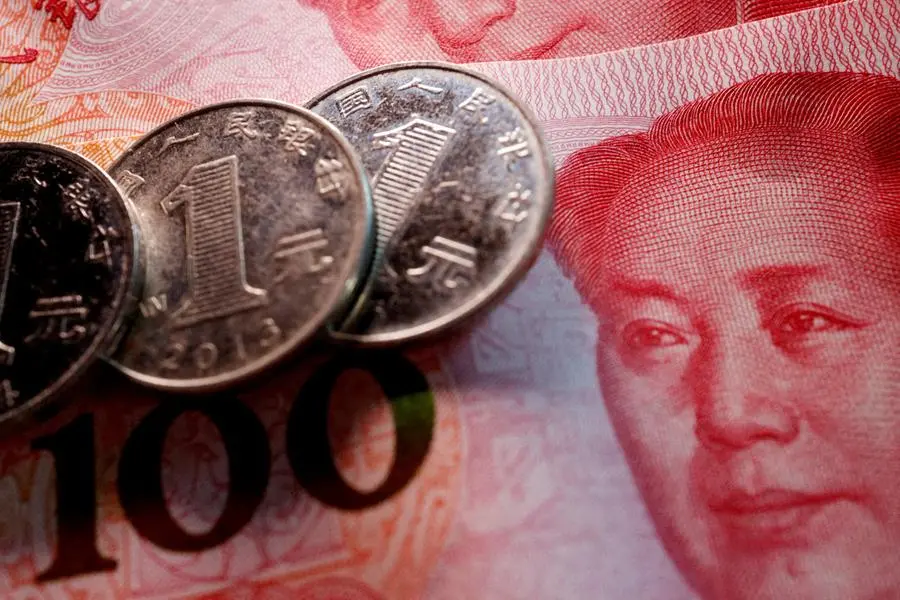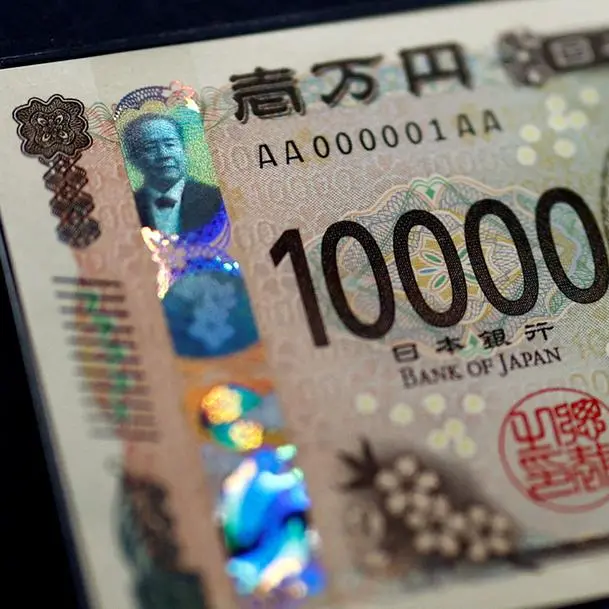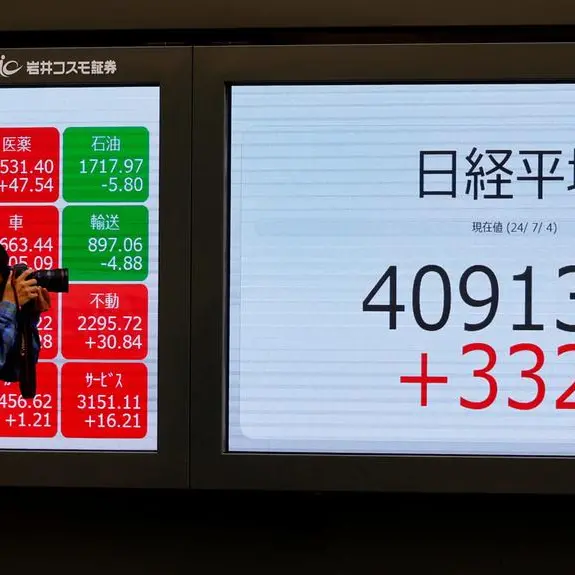PHOTO
FILE PHOTO: Coins and banknotes of China's yuan are seen in this illustration picture taken February 24, 2022. REUTERS/Florence Lo/Illustration/File Photo Image for illustrative purpose
Disappointing Chinese factory activity data kept a cap on the yuan on Thursday, but the currency looked set for its biggest monthly gain in a year against the weakening dollar. Spot yuan was changing hands around 7.1250 at midday, little changed from the previous late session close. If it ends the day at that level, it will have appreciated roughly 2.8% against the dollar in November. The greenback was rooted near a three-month low on Thursday and was set to post its steepest monthly decline in a year as investors ramped up bets that the Federal Reserve is done with rate hikes ahead of a crucial inflation report later in the day. Analysts pointed to near-term risks for the yuan as the dollar appears over-sold, but said the prospect of U.S. rate cuts next year and fresh stimulus from Beijing will bolster the Chinese currency in the long term.
The central bank set a slightly stronger fixing prior to the market open that "still points to a policy warning against any yuan bears out there," Maybank said. Caution reigned as data showed that China's manufacturing activity contracted for a second straight month in November and at a quicker pace. A separate PMI reading on the non-manufacturing sector also weakened. "The PMIs disappointed again and .... suggest that the economy stagnated in November," Capital Economics wrote. If activity remains weak, "policy support will need to be ramped up further to prevent the economy from backsliding." Posing another risk for the yuan, Maybank cautioned a possible bounce in the greenback as the dollar index "is in oversold territory".
The index, which measures the dollar's value against a basket of major global currencies, has slumped 3.7% this month as U.S. Treasury yields fall. Traders are keenly awaiting the upcoming U.S. Federal Reserve policy-setting meeting as U.S. central bankers dive deep into inflation data for signals on whether they have pushed interest rates high enough. ANZ said it expects the Fed to start cutting rates in the third quarter next year, citing subsiding U.S. inflation and weakening economic growth expected in 2024. Narrowing U.S.-China yield gaps would aid the yuan, but the real support would come from a more solid Chinese economic recovery.
"Still-weak data may see authorities laying more options of policy support on the table, while markets continue to seek for the conviction for a sustained recovery in the world's second largest economy," wrote IG Asia Ptd. The yuan market at 4:01AM GMT: ONSHORE SPOT: Item Current Previous Change PBOC midpoint 0.02% 7.1018 7.1031 Spot yuan 0.00% 7.1248 7.1245 Divergence from midpoint* 0.32% Spot change YTD -3.16% Spot change since 2005 revaluation 16.16% *Divergence of the dollar/yuan exchange rate.
Negative number indicates that spot yuan is trading stronger than the midpoint. The People's Bank of China (PBOC) allows the exchange rate to rise or fall 2% from official midpoint rate it sets each morning. OFFSHORE CNH MARKET Instrument Current Difference from onshore Offshore spot yuan * 7.129 -0.06% Offshore non-deliverable 6.938 2.36% forwards ** *Premium for offshore spot over onshore **Figure reflects difference from PBOC's official midpoint, since non-deliverable forwards are settled against the midpoint. . (Reporting by Shanghai newsroom; Editing by Kim Coghill)





















